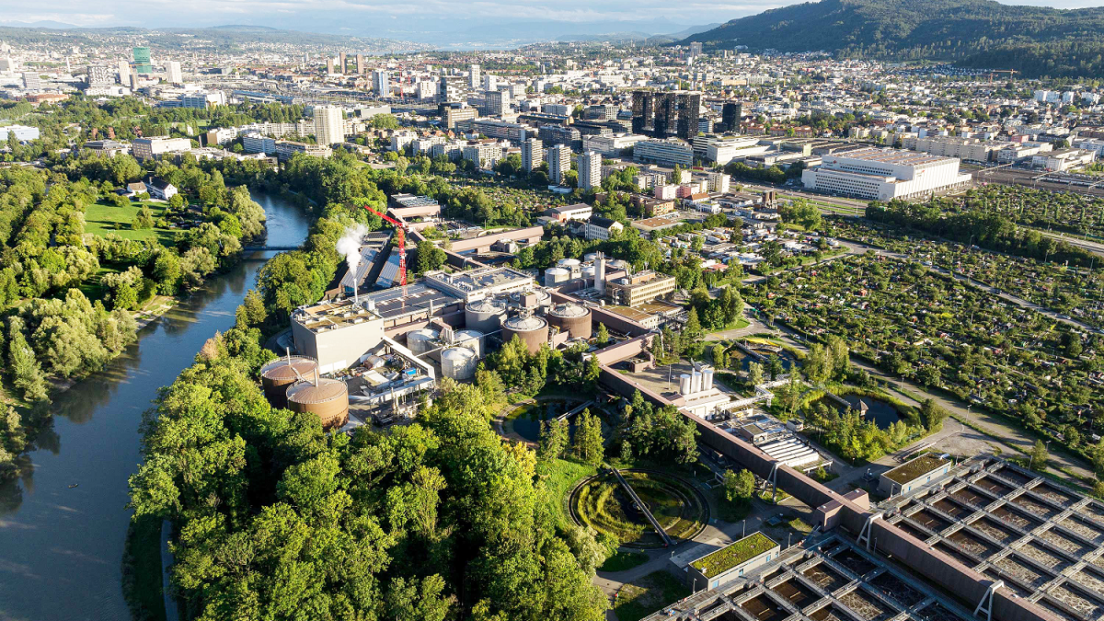A step towards a fossil-free future

The Altstetten and Höngg energy network, the largest project of its kind in Switzerland, marks a decisive step forward in the sustainable supply of heat to 30,000 households based on the use of renewable energy sources.
The city of Zurich’s energy planning envisages making better use of renewable energy sources in future. With an approval rate of 88 per cent, the voters of Zurich said yes to the CHF 128 million project loan for the Altstetten and Höngg energy network.
The urban areas of Altstetten and Höngg offer ideal conditions for an energy network. They have a high heat consumption density and are close to the heat source, the Werdhölzli sewage treatment plant. The commissioning of the Altstetten and Höngg energy network makes it possible to utilise the previously unused heat potential of the Werdhölzli wastewater treatment plant.
The temperature of the treated wastewater is between 11 degrees Celsius in winter and around 25 degrees Celsius in summer. Entsorgung + Recycling Zürich treats up to 80 million cubic metres of wastewater every year. Before the purified water flows into the Limmat, it passes through the waste heat utilisation building, where the heat is extracted. In the energy centre, heat pumps raise the temperature to the level required for useful heat.
Another heat supplier is the sewage sludge utilisation plant, which is also located on the site. The waste heat generated during the incineration of the sewage sludge is a valuable source of energy. Verbund utilises both the direct excess heat from the sewage sludge utilisation plant and the condensation heat from the exhaust gases. As the sewage sludge utilisation plant has temperatures of 70 to 80 degrees Celsius, it can be fed directly into the system without having to go through a heat pump.
In addition, the waste heat from ice production at the ZSC Lions’ new Swiss Life Arena is fed into the anergy network. From summer 2022, the Swiss Life Arena’s energy centre will produce cooling for the connected properties, which will be used to cool the offices and commercial premises. The cooling is produced using highly efficient heat pumps.
The Altstetten and Höngg energy network consists of various sub-perimeters. The Höngg and Altstetten Nord areas are largely connected to the energy network. In the Höngg-Zentrum and Altstetten Ost areas, implementation will take place from 2023 to 2032.